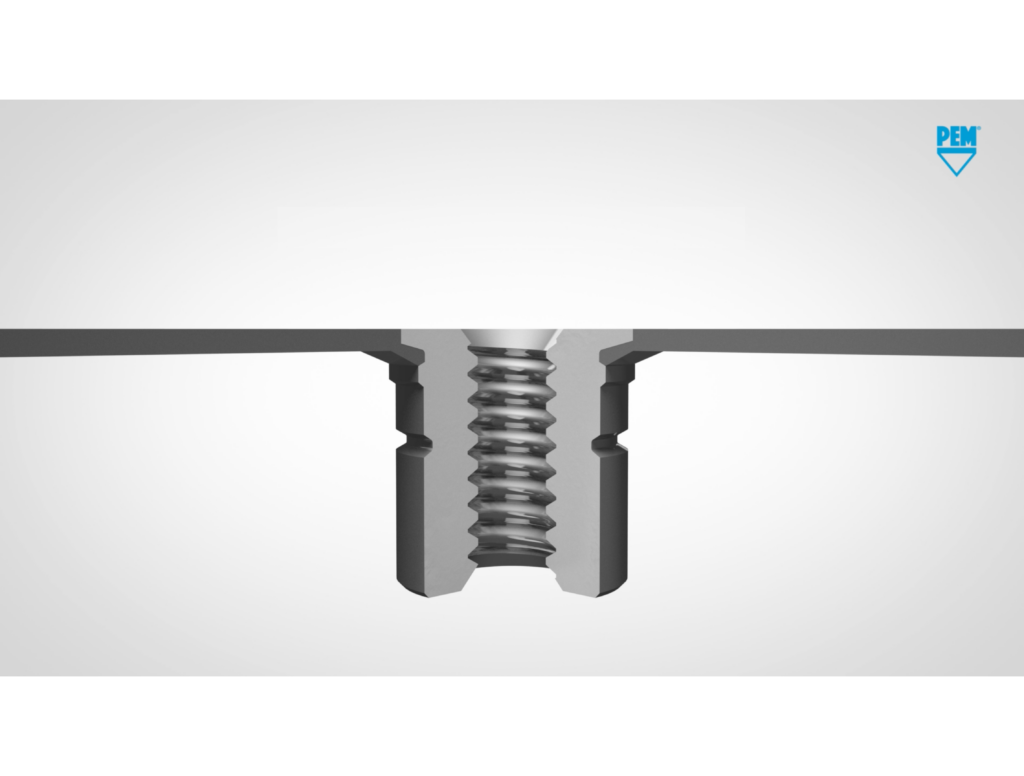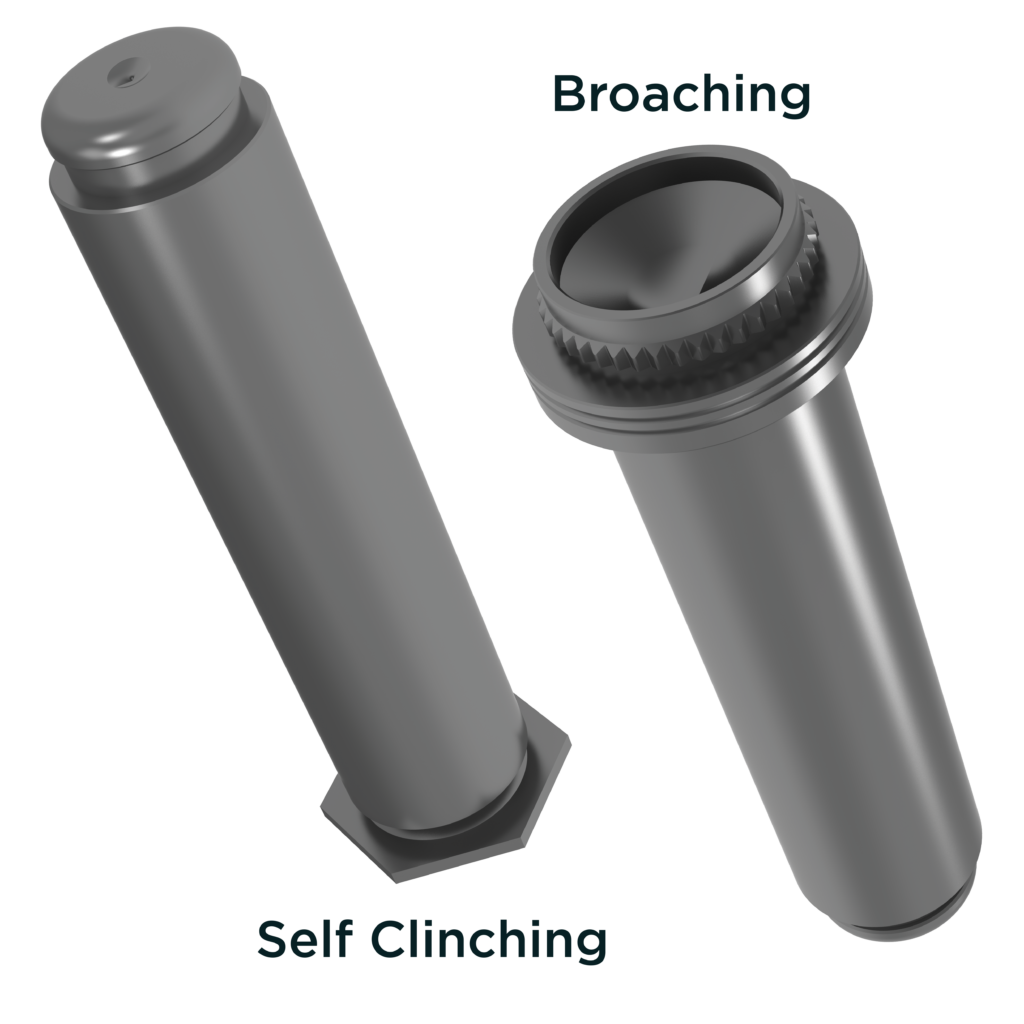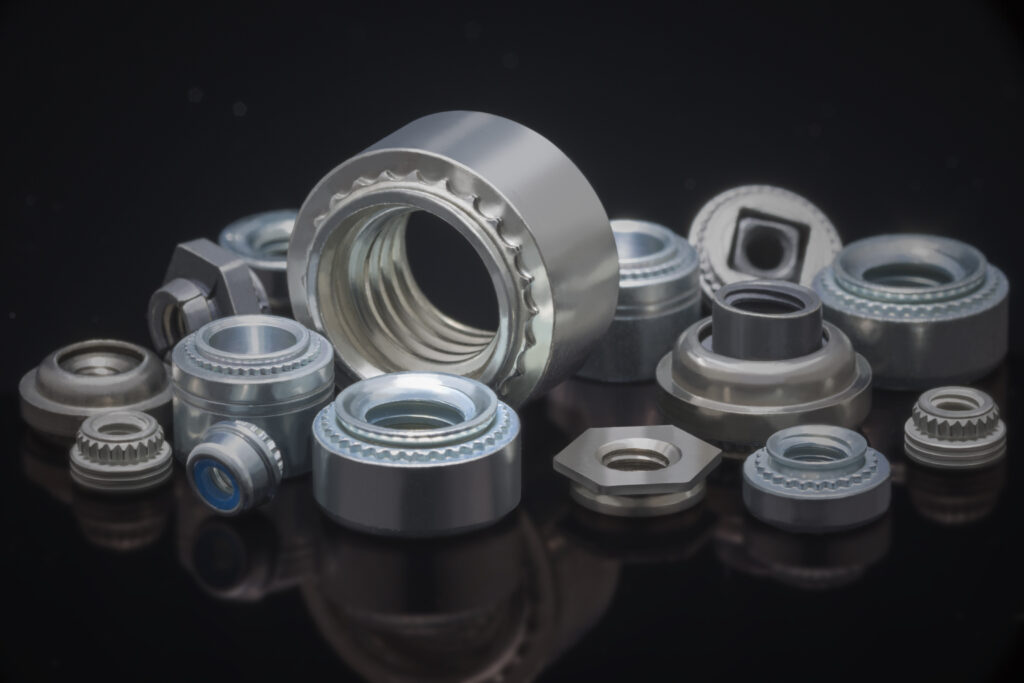
Table of Contents
Product Pages
Standoffs
KEYHOLE® Standoffs
SNAP-TOP® Standoffs
Nuts
Clinch Nuts
Floating Nuts
Blind Nuts
Flush Nuts
Locking Nuts
Rivet Nuts
Studs
Locating Pins
Captivated Screws
Simple Screws
Spring-Loaded Screws
Knob Cap Screws
Threaded Inserts
Press-In Inserts
Molded-In Inserts
Ultrasonic/Heat-Staking Inserts
Compression Limiters
Specialty Fasteners
Cable Tie Mounts
TACKPIN®
Panel-to-Panel Fasteners
Right Angle Fasteners
Attachment Technologies
Overview
Unlike a basic threaded nut with a through-hole, a blind nut is closed on one side. Due to the difficulty of threading a blind hole to the bottom, a blind nut is often much taller than a through-hole nut and in this way can resemble a standoff. However, a blind nut is open on the attachment side while a standoff is typically open on the extending side.
Application
The general purpose of a blind nut is to have an internal thread that accepts a screw while limiting the displacement of the screw through the panel, and to prevent anything from falling into the assembly. Some thin TVs require mounting threads that are positioned above sensitive electrical components. These components could be damaged if third-party hardware screws are too long. A blind nut prevents this from happening by closing off the bottom of the hole, which protects the internal components.
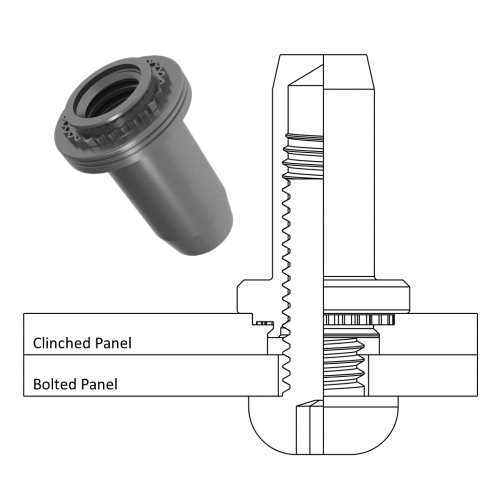
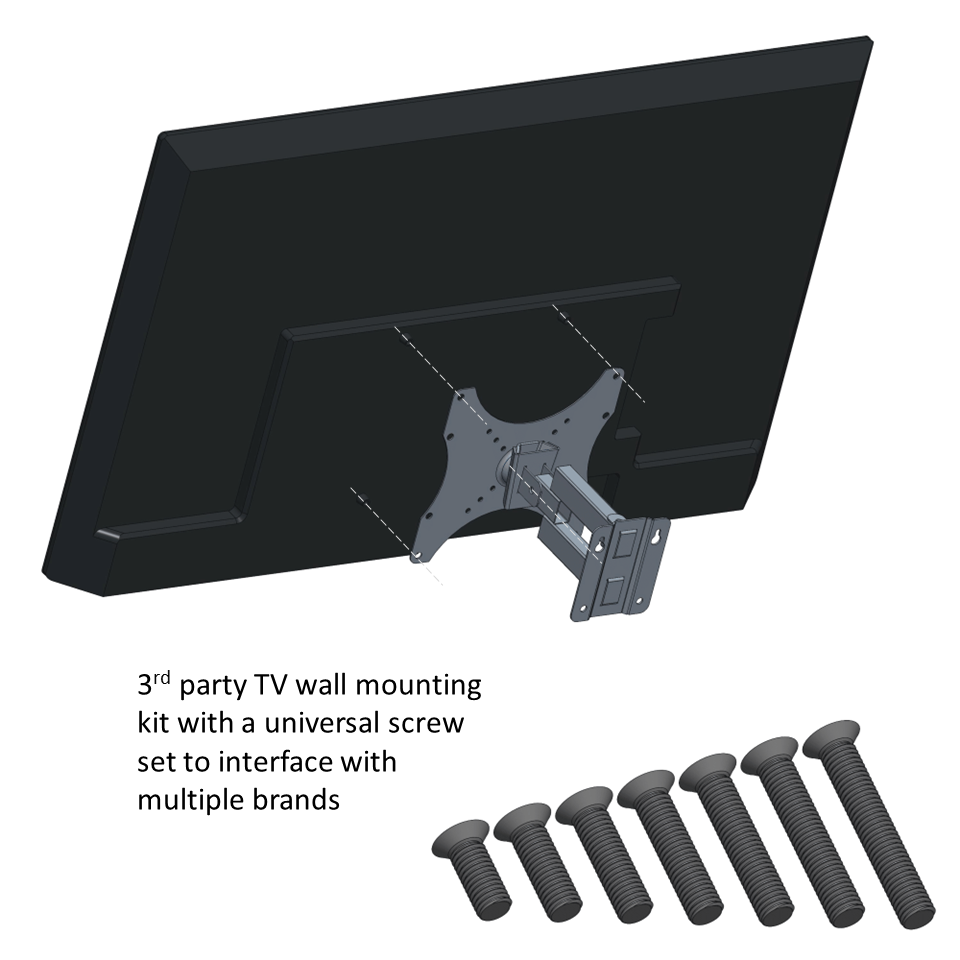
TV manufacturers may want safeguards in place to mitigate potential damage due to the use of 3rd party accessories.
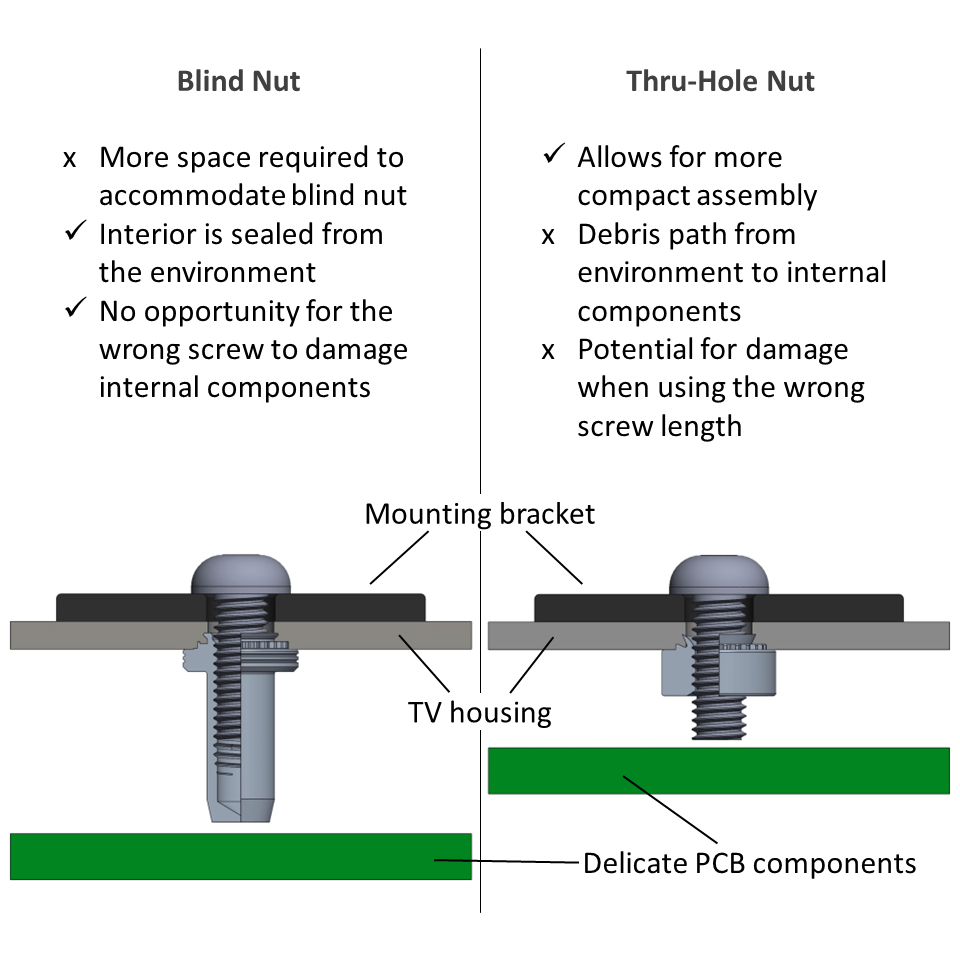
Comparison of mounting hole assemblies using a blind nut or a thru-hole nut.
Alternative Solutions
While blind nuts eliminate the risk of damage from longer screws, the nut itself must be longer in order to maintain the same length of engagement or the same number of threads for a screw to hang onto. This means increasing the thickness of the TV to account for the increased length or using shorter screws in greater number to sustain the same load. Alternatively, through-hole threads minimize length while maximizing the number of threads. Providing a TV mounting kit with specifically designed hardware can also reduce the risk of internal damage. However, without a blind nut thread, there is still potential for dust and debris to enter the assembly.
Common Attachment Technologies
Blind nuts often close off the internals of an assembly to accept a screw from outside the assembly, with most thin walls being metal panels. This is why self clinching is the most common attachment method for blind nuts. In PCB applications that require no through-hole, a blind standoff is more common with either broaching or surface mounted (SMT) attachments. In applications with access to only one side of a panel, blind rivet nuts can be mounted without aggressive deformation of the panel.
Relevant Products from PEM:
See sizes and material varieties of blind nuts in our Product Finder:
To learn more, visit the B Datasheet for self-clinching, blind nuts.
Have a project?
Let’s get started.
Talk to us about creating a custom part, tool or process. We are equipped to help you to take on and solve your biggest engineering challenges.
Talk to us about creating a custom part, tool or process. We are equipped to help you to take on and solve your biggest engineering challenges.

Looking for CAD Downloads?
Access to the original PEM Catalog and CAD downloads.
Have a question?
Talk to an Engineer.
See what’s possible.
Connect with a PEM® engineering expert today and discover a reliable, cost-effective fastening solution for your challenging applications.
Or Call Us: 1-800-342-5736

